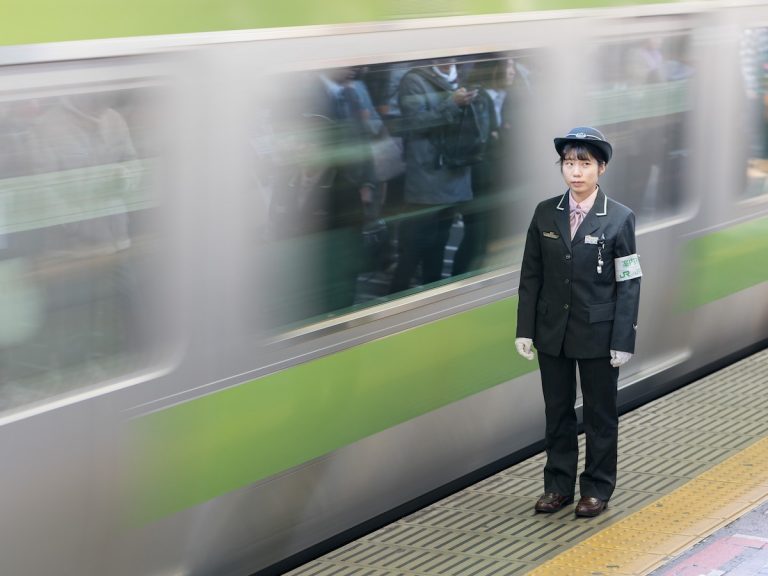
If you’ve ever traveled around Tokyo, chances are you’ve taken the famous Yamanote Line. It goes around in a loop and stops at key areas in central Tokyo. Departing every two minutes and carrying over four million passengers a day, the history of the 35-kilometer line makes for an exciting read.
History of the Yamanote Line
Let’s go back almost a century and a half, on Oct 14, 1872, when the Tokaido Line, Japan’s first railway line, officially opened. It was a 29-kilometer stretch connecting Shimbashi in Tokyo to the port city of Yokohoma. The line passed through Shinagawa and was used for freight distribution. The stretch connecting Shimbashi and Shinagawa became the first bit of the loop that would eventually become the Yamanote Line.
The Tohoku Line was then built to connect northern Japan with the populated area in Tokyo. Like the Tokaido Line, it was also used for freight distribution such as silk and vegetables coming from the north and stopping at Ueno station. However, it was soon discovered that there was a missing link connecting Ueno up north to Shinagawa down south. Despite being only a 5.5-kilometer gap in between the hubs, the area was located in a densely populated area.
Therefore, in 1885, the Nippon Railway established a private line, the Shinagawa Line, away from the section with one million inhabitants and passed through Tokyo’s virtually inhabited western land. It was almost quadruple in length, but the empty land meant lower construction costs at a quicker rate of completion. The route eventually becomes Shibuya and its nearby stations of today.

Quick Facts About the Yamanote Line
Ready for some interesting tidbits about the Yamanote Line? When Shinjuku station first opened in 1885, it only served about 50 passengers a day. Imagine the number not even reaching a hundred, compared to the average 3.5 million passengers today, making it the busiest station in the world.
The Yamanote Line wasn’t always called that. Let’s first break down the kanji of the name “山手線” or Yamanote Sen (line). Yama (山) stands for “mountain” and te (手) for “hand” or “direction” in this case. While it is common for kanji only to indicate the main ideas of the word and skip the particles such as “no,” the line was actually called Yamate Line until the 1970s when the country made an effort to differentiate the Yamanote Line with Yokohama’s Yamate Line.
Today, there are 30 stations in the loop extending 35.9km long. It can complete one round in 59 minutes, averaging two minutes per station (every 30 seconds during rush hours). The loop, with its two-directional operation, is not called by the stations or the destination like other lines but by the clockwise (sotomawari; 外回り; “outer circle”) and counter-clockwise (uchimawari; 内回り; “inner circle”) directions.
Since the entire Yamanote loop was officially completed and connected in 1925, only two stations were added, Nishi-Nippori and Takanawa Gateway, which opened in 2020. This means almost a century of operations with renovations, improvements, and maintenance focusing on the existing stations over expansion.

Architecture the Showcases a Marriage of the East and West
You might be wondering why many of the stations feature European architecture, with Tokyo station’s red bricks and the old Harajuku station’s “half-timbered” wooden building. For a country keen on preserving and upholding its history, traditions, and culture, you might expect the stations to portray a more local façade.
One reason is that Japan, at the time of developing the stations, was focused on transforming Japanese society to that of North American and European values. The government even commissioned German architect Franz Baltzer, who was responsible for many of Berlin’s train stations, to design Tokyo station. However, his initial proposal horrified the government as it was a fusion of traditional Japanese mixed with European architecture.
Eventually, Tatsuno Kingo, a Japanese architect passionate about Western architecture, got to designing the iconic Tokyo station. Over 7.5 million locally manufactured red bricks adorn the crown jewel station, costing about $650 million to build.

Yamanote Line Today
Having survived multiple attacks during World War 2, where Ebisu, Gotanda, Osaki, Shinagawa, Yurakucho, Akihabara, Komagome, Sugamo, Ikebukuro, and Takadanobaba stations would burn down and over half of Yamanote Line’s stations damaged, the loop has had its fair share of historical milestones.
From being built to carry goods across Tokyo’s hubs and catering to 50 passengers a day to Shinjuku station’s 200 exits and 36 platforms servicing 3.5 million passengers a day, it is safe to say that the Yamanote Line has progressed to become the heart of Tokyo that keeps the transport system functioning reliably.

A Glimpse of the Train Cars
If you’re a train otaku, here’s some info on the easily distinguished green cars of the Yamanote Line. From the boxy design of the E231 series to the sleek and modern E235 series introduced in 2015, the Yamanote Line trains showcase Japan’s journey in modernization. Given the importance of the line to Tokyo, the Yamanote Line is often the first to receive new railway cars. The current design features temperature monitoring, more spacious “free space” at one corner for wheelchairs, strollers, luggage, and screens above passenger seats that air JR announcements and advertisements. It was only in 2020 that a similar train series were introduced to other lines.
The Future of the Yamanote Line
Just when you think that the Yamanote Line has reached its full capacity regarding the number of stations, there is still so much in store for the loop in the renovation and improvement aspects. Of course, there’s also the unceasing task of ensuring that the railway system functions smoothly with minimal delays and mishaps and its stations remain clean and safe.
Like many things in Japan heading in the artificial intelligence and automation direction, the same goes for Yamanote Line’s stations and trains. For example, a driverless test was conducted in 2019 to debug this technology that will replace the workforce. JR East announced that about 25 percent of its workforce is expected to retire in the next decade, hence the need for train cars and stations to be operated with minimal staff. Driverless technology is expected to be rolled out in the next ten years.
Stations are also getting an upgrade, such as the ongoing Shibuya station upgrade, which will flaunt more user-friendly features to cater to the aging population in the means of more elevators, escalators, and wheelchair ramps. You also have Takanawa Gateway, which opened in 2020, considered an automated station prototype. Here you will find cleaning robots sweeping the floors, information robots offering directions and guidance in multiple languages, and security robots on standby for emergencies.
If you’re ever in Tokyo, chances are, you’ve taken the Yamanote Line – even more so if passengers are sardined to get to their destinations during rush hour. Still, the Yamanote Line is a symbol of Japan’s railway system’s transformation, progress, and modernization.
















